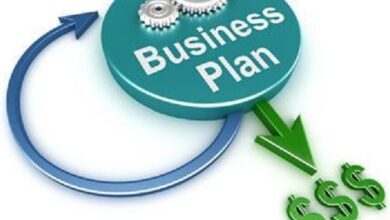What is behavioral targeting its Advantages Types and Uses
What is behavioral targeting?
Today we will learn what behavioral targeting is , a form of marketing segmentation that divides people into different groups that have a specific pattern of behavior in common.
This market segmentation is very important because we must be aware that users can share the same stage of the life cycle, have previously purchased certain products or have similar reactions to their messages.
Behavioral targeting is a targeting method based on the behavior of customers or prospects.
Behavioral targeting can be related, among other things, to:
- Purchase modes (location, packaging, etc.)
- Purchase volumes
- Consuming patterns
- Channels used
- Behavior of visiting the website or using the application
- Reactions to receiving emails
Advantages of behavioral targeting
Companies combine multiple marketing channels such as email, SMS, messengers, and push notifications to deliver a more meaningful personalized customer experience across all touchpoints.
Here are some of the benefits of using behavioral targeting:
- Improves the precision of segmentation . Behavioral targeting allows companies to take advantage of differences in behavior, optimizing their marketing messages based on that data.
- Helps deliver a more personalized experience . Mass emails with the same message to everyone is an outdated practice today. Instead, you need to deeply analyze your audience and meet people’s demands with a personalized approach based on the social groups to which they belong.
- Filter out compromised users from disinterested ones . Marketing managers filter the target audience they are going to work with by identifying the level of user engagement. This increases the chances that your products will be found by people who really need them.
- Save money . Behavioral targeting helps you prioritize campaigns to make your marketing more profitable. It allows you to dedicate less to an audience that is not interested.
- Makes it easy to track success . You can track the metrics within each segment and improve your results.
- Help build brand loyalty . Behavioral targeting helps you create a better customer journey and keep them engaged. People who receive personalized treatment are more likely to be loyal to your brand and become advocates for it.
Types of behavioral targeting with examples
You can combine various types of targeting based on relevance to your business and the specific characteristics of the products and services you promote.
Let’s take email as an example for each type of behavioral targeting, as it works for any business, from small to large.
-
Type of segmentation based on purchasing behavior
This segment takes advantage of the behavior of users when they make a purchase.
Check if they doubt, if there are any obstacles in their way to make a decision. The answer to these and other simple questions will help you simplify the buying process.
Let’s point out some common situations when people are about to become customers:
-
- Consider the best price . This is the most important factor in influencing the purchasing decision process . By identifying hesitant people by hoping for a better price, you dramatically increase your chances of making a sale to them during special occasions, such as when prices are lowered.
- Seek social approval . These users are interested in a product, but wonder if others are satisfied with it. To address concerns, place customer reviews on your website or right in the email campaign.
- They have all the time in the world. These customers are interested, but in no rush to buy your product. In this case, add a time-sensitive item, like an email countdown, or come up with a limited-time discount. This creates a sense of urgency.
-
Based on benefits
This is a way of dividing customers according to the benefits they seek and motivating them to buy your products or services. Find out what benefits drive your customers to buy and focus on them.
Try to identify what is preventing a person from using a service: technical problems, lack of benefits or lack of motivation.
-
Based on a life cycle stage
Behavioral targeting based on a customer lifecycle stage works well for selling products and services with a long lifecycle.
It is not easy to assign the user life cycle stage because it cannot be judged on the basis of a single point of contact. For this, it collects data on all points of contact with the customer through all the marketing channels you use: emails, social networks, search engine, chatbot.
-
Based on a level of commitment
This segment is built based on the frequency with which users register for your service or the number of orders they place at your restaurant. Adjust your marketing messages based on this data and encourage user engagement. This segment helps reduce churn rate and improve sender reputation by dividing your target audience from unengaged people.
Let’s check three basic levels of user engagement:
-
- Occasional . This means that users have a contact with your brand, but it is not systematic. They may lack motivation, so find out why with the help of a survey , for example, and fix it.
- Regular . Users regularly interact with your service, but they don’t make the most of the features. Share how-to videos, highlight all the features that might be useful to them, and offer a loyalty program .
- Intensive . These users integrate your service into your life, and that is why you have to treat them especially. Offer them bonuses, invite them to special events, congratulate them on their birthdays, because don’t forget, these people can advertise your brand through word of mouth and become loyal customers.
The following example is a reactivation email whose goal is to keep a user engaged.
-
Occasion-based behavioral targeting types
It is a segmentation based on a specific time that is the best to deliver your marketing messages.
Use holidays like Black Friday, Cyber Monday, or national holidays depending on the user’s location. Take advantage of special dates such as their birthday or anniversary. Pay attention to the days of the week and the most convenient time of day for communication.
To apply occasion-based targeting, collect personal data through online forms . This data will help you improve the open rate of your campaigns and build a positive brand image.
-
Based on customer satisfaction
This type of behavioral targeting is based on customer feedback. Help fix problems when users are unhappy with the product before they spread negative words about your brand.
On the other hand, it helps build stronger relationships with other users who already like your brand.
-
Based on customer loyalty
Find out which customers you should focus your loyalty programs on and which ones may lack value for your brand.
Loyal customers are the most beneficial to any business as they have the highest lifetime value. It is cheaper to retain existing customers than to acquire new leads. Also, loyal users are more likely to become advocates for the brand and promote it in their social circles.
Uses of behavioral targeting
These are some of the uses that you can give to this type of segmentation:
- You can send emails related to a purchase: abandoned cart emails, confirmation emails, email notifications, etc. Also, try to use campaigns to welcome users, reactivate them, and upsell and cross-sell.
- Track people’s reaction to your SMS advertising campaigns. Divide your audience into segments based on whether they have used your promo codes or not, and try to find other ways to contact unengaged users.
- With Facebook advertising, for example, you can tailor your ads to people based on how they react to your posts. If users respond commonly, encourage them with a discount.
- As users communicate with your chatbot, you can identify the stage of the user’s lifecycle, making it easier to find the right approach for the next touchpoints.




